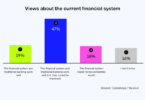The European Council has approved the Markets in Crypto Assets (MiCA) law and published the current version, but that’s not the final step. The Council mainly consists of the heads of state of the member countries. The European Parliament still needs to have its final say.
The Parliamentary Economics Committee next meets on October 10, when a vote is expected. After that, it will go to the rest of the Parliament.
MiCA divides crypto-assets into e-money (stablecoins), asset referenced tokens which include stablecoins backed by other assets, and everything else. The e-money and asset-referenced token legislation come into force 12 months after the bill is approved. And everything else applies 18 months later. So that means stablecoins in early 2024 and the rest mid-2024.
Various regulators are responsible for drafting detailed rules. That’s mainly EBA for e-money and ESMA for the rest.
There has been some fuss about caps on tokens linked to foreign currencies. In reality, the limit of 1 million daily transactions or €200 million relates to all asset-referenced tokens not considered e-money. So that would cover MakerDAO’s DAI in Europe. And if everyone started paying in gold-backed tokens, it would include those. It is pretty much anything that’s deemed to pose a threat to monetary sovereignty.
The legislation includes algorithmic stablecoins but does not cover DeFi, NFTs and lending. Reports on those three topics will be published within 18 months of enactment. Plus, there will be an additional report on “services associated to the transfer of e-money tokens.”
Fractional non-fungible tokens are covered, because the fractions are considered fungible.
While lending is not covered, it sort of is
Despite not being in scope, the legislation heavily impacts lending with clauses that have been included since early drafts.
There are clauses that issuers of e-money and asset-referenced tokens can’t pay interest, nor can crypto service providers. Interest is defined pretty broadly as almost any additional benefit. For example, if a crypto exchange gave users their own token, that would count. A significant proportion of crypto lending involves stablecoins, so this would inhibit centralized lending. It may not apply to DeFi lending, given the lack of an identifiable crypto service provider.
In the past, crypto lender Nexo had an interesting way of getting around similar e-money rules. If a user paid in currency, they were issued a sort-of stablecoin except not an externally exchangeable one. We believe e-money rules do not apply if it’s an internal platform thing.
Meanwhile, another major piece of legislation that covers tokenized securities has been passed. The so-called DLT pilot regime allows blockchain-based financial market infrastructures to operate with some limited legal waivers and comes into force in March 2023.






